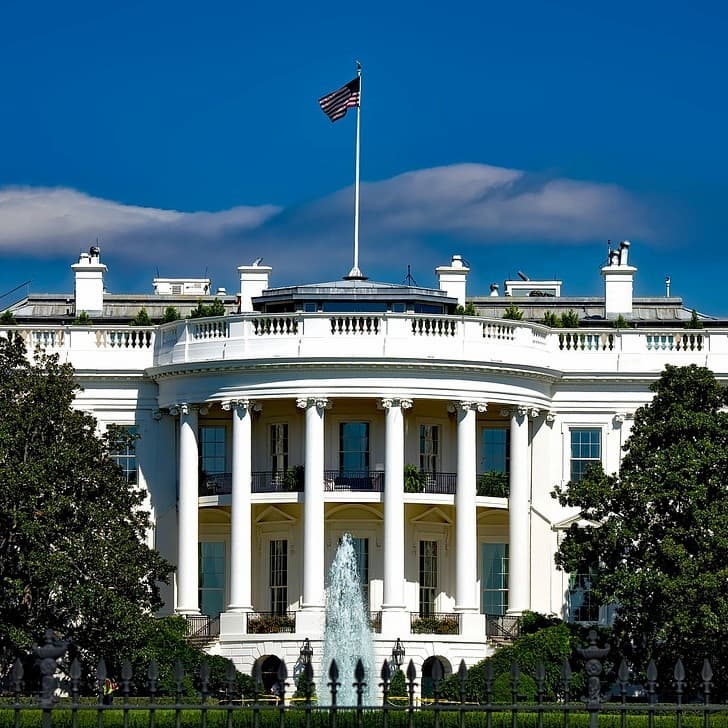Tax
The One Big Beautiful Bill: Another Look At Implications

Time for another dive into the details of this important recent US tax legislation.
We have at Family Wealth Report covered the recent One Big Beautiful Bill Act's variety of tax measures from angles we hope will resonate with clients of wealth managers and banks, not to mention people in family offices. (See analyses here and here.) In the following article, we carry more commentary, this time from Maxwell Youngquist (pictured below), partner, and family office structuring and governance leader for RSM US.

Maxwell Youngquist
The editors are pleased to share these comments. The usual editorial disclaimers apply. Email tom.burroughes@wealthbriefing.com and amanda.cheesley@clearviewpublishing.com if you wish to comment.
Small business and startup investments
The OBBBA gave an injection to the already significant tax
benefits of qualified small business stock (QSBS). The Act
changed Section 1202 in three very significant ways. First, the
holding period is now graduated for stock acquired after July 4,
2025. Prior to the enactment of the OBBBA, QSBS had a holding
period of at least five years before the taxpayer could exclude
gain on the disposition of such QSBS.
The OBBBA changes this regime to a graduated scale: QSBS held for at least three years will be eligible for 50 per cent exclusion of taxable gain; QSBS held for at least four years will be eligible for 75 per cent exclusion of taxable gain; and QSBS held for at least five years will be eligible for 100 per cent exclusion of taxable gain.
This change will allow powerful tax benefits for investors even if an exit opportunity comes prior to the five-year holding period being met. Second, the exclusion amount is increased from $10 million to $15 million with a yearly inflation-based adjustment. This provision will further enhance tax planning for maximizing per-issuer, per-taxpayer gain exclusion. Third, the limit on “aggregate gross assets” has been increased from $50 million to $75 million.
This allows owners of businesses to take advantage of single-level pass-through taxation (especially useful during loss generating years) for a longer period before converting to a C corporation. This is critical since many methods of converting to a C corporation involve a contribution of property, which results in the aggregate gross assets limitation being tested using the fair market value of the property rather than its adjusted basis.
Real estate
The OBBBA is introducing a number of tax policy changes that
reshape real estate investment economics and long-term investment
strategies. First, it restores 100 per cent bonus depreciation
for many property improvements, interiors, and equipment, giving
investors the ability to deduct large capital expenditures
immediately resulting in improved cash flow and returns. Second,
OBBBA reinstated the depreciation, amortization, and depletion
add-back for IRC Sec. 163(j).
This increased business interest expense limitation will be relevant for real estate activities that are weighing the cost vs. benefit of an IRC Sec. 163(j)(7)(A)(ii) Electing Real Property Trade or Business Election. The election may no longer be necessary or even beneficial. As a result, this provision will make debt-financed deals and leverage more appealing in capital structuring. Compounding the benefit of this provision there is the added positive interaction with the new bonus depreciation rules and this provision.
Third, the OBBBA introduces several significant changes to the OZ program by expanding its reach and its impact while transforming the program into a long-term strategic tool for real estate development and investment. While the OBBBA narrows the eligibility criteria for OZs by lowering the threshold for designating a low-income community it does create a rolling 10-year designation cycle.
The rolling 10-year designation cycle should create a steady pipeline of new zones, allowing the ability to align investment strategies with new markets. Under this provision taxpayers investing capital gains into a qualified opportunity fund (QOF) on or after January 1, 2027, will be able to take a 10 per cent basis step up for investments held at least five years.
Gains deferred will now be recognized on the fifth anniversary of the investment date allowing predictable tax planning. The OBBBA also created a new category of fund for rural areas. The qualified rural opportunity fund (QROF) provides for a 30 per cent basis step-up for investments held at least five years and the OBBBA reduced the substantial improvement requirement for rural OZs from 100 per cent to 50 per cent.
This is particularly highlighted by how it seeks to influence real estate developers to pursue projects in traditionally underserved rural areas with lower capital requirements and better tax advantages.
Overall, the legislation provides an opportunity for long-term predictable planning and capital deployment by investors for multi-phase projects spanning decades to maximize the investment holding period cap of 30 years. On the 30-year anniversary of an investment, the basis in the investment is stepped up to its fair value. Lastly, there is a raise to the expensing limit under IRC Sec. 179 from $1 million to $2.5 million and the phase-out threshold from $2.5 million to $4.0 million.
Philanthropy
OBBBA will have a strategic impact on donors and nonprofits. For
donors the universal deduction will have the broadest impact
where starting in 2026, individuals who don’t itemize can deduct
up to $1,000 ($2,000 for joint filers) for charitable gifts. This
is an incentive affecting most taxpayers who had prior to this no
direct tax benefit for giving. For nonprofits, this provision
creates an opportunity for broader engagement and support.
However, under the OBBBA, if you itemize, your charitable deductions will only begin to be deductible once they exceed 0.5 per cent of Adjusted Gross Income (AGI), but the 60 per cent AGI limitation has been made permanent. Additionally, OBBBA provides that the maximum benefit for a charitable contribution deduction shall be calculated using a 35 per cent marginal income tax rate if the taxpayer’s actual highest tax rate is in the 37 per cent or the 35 per cent marginal income tax bracket.
This has resulted in potential planning opportunities for charitable contributions to be made before the 2025 year end or to pursue future bunching of contributions to take advantage of years when a taxpayer has a lower threshold. Notably individual donors won’t be the only ones affected, starting in 2026, C corporations are also subject to a new floor in addition to the traditional 10 per cent ceiling, they will only be able to deduct their charitable contributions to the extent that they exceed 1 per cent of their taxable income. This risks a negative impact on overall corporate giving dollars.
For private foundations and private college endowments the bill will have a deeper tax impact and introduced new tiered excise tax systems that critics say will further negatively impact overall dollars. The existing 1.39 per cent tax on large private college endowments has been replaced with a progressive rate structure based on endowment size per student.
For private foundations the flat 1.39 per cent excise tax on net investment income is replaced with a tiered system based on the foundation’s asset value with a top rate of 10 per cent on asset values over $5 billion.
State and local tax (SALT) planning
The OBBBA’s biggest impact on SALT planning was the introduction
of a temporary SALT deduction cap of $40,000 starting in 2025,
which will phase out for individuals earning over $500,000.
A change that ties into the philanthropy changes focused on
reducing itemized deductions for high earners.
The cap is set to increase by 1 per cent each year through 2029, with the limit reverting to $10,000 in 2030. However, the PTET workarounds are still valid, allowing pass-through entities to continue paying state income taxes at the entity level, and thus, bypassing the cap on SALT deductions for individual owners. Be careful though, as some PTET regimes are scheduled to expire unless extended, and state conformity and decoupling to federal provisions is a patchwork, so planners will need to monitor state legislative landscapes.
Estate planning
Before the OBBBA the 2017 Tax Cuts and Jobs Act (TCJA) had
doubled the basic exclusion amount, but the increase was slated
to sunset at the end of 2025 causing a decent panic for estate
planners and wealthy individuals alike. The OBBBA has further
increased these historically high exemption thresholds returning
stability to estate planning and with no sunset provision
significant opportunity for long-term consistent estate planning
and wealth transfer.
This is a significant and taxpayer-favorable change in the law. As of January 1, 2026, the exemption will be $15 million per individual ($30 million for married couples, with portability), indexed for inflation for subsequent years, but the tax rate remains at 40 per cent.
Additionally, the generation-skipping transfer (GST) tax exemption will be adjusted to match the increased estate and gift tax exemption. With this provision there is a sense that taxpayers can shift their focus away from estate planning but, individuals should be aware though that the power of estate planning is in time whereby transfers today shield growth and appreciation from estate and gift taxes.
Taxpayers should not wait to do estate planning because estate taxes are a consistent focus of administrations and there is no guarantee that the increased exemptions will not be reduced in the future.